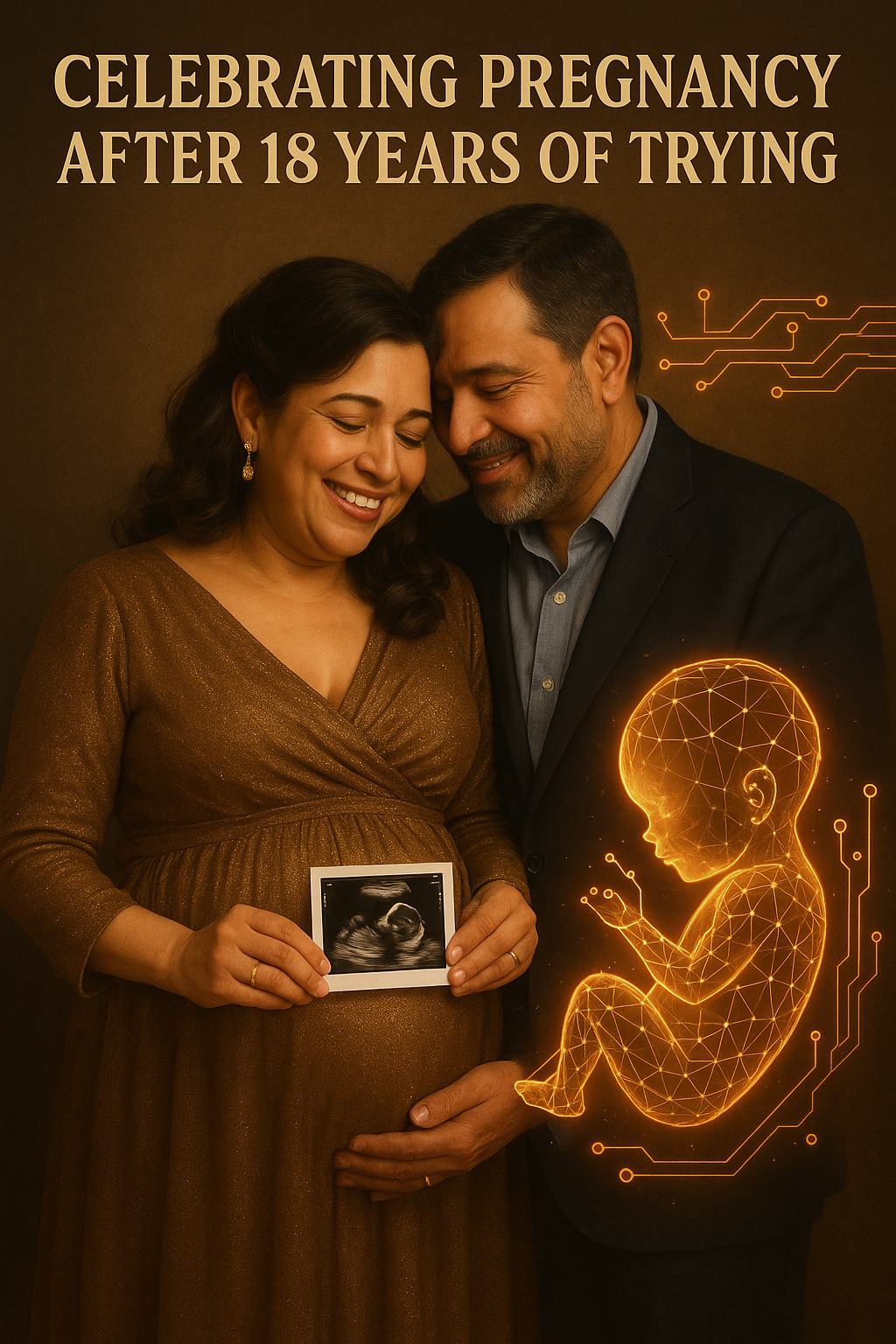Artificial intelligence (AI) is rapidly changing the landscape of fertility treatment, and nowhere is this more evident than at Columbia University Fertility Center.
After trying to conceive for 18 years, one couple is now pregnant with their first child thanks to the power of artificial intelligence.The couple had undergone several rounds of in vitro fertilization, or IVF, visiting fertility centers around the world in the hopes of having a baby.
The IVF process involves removing a woman’s egg and combining it with sperm in a laboratory to create an embryo, which is then implanted in the womb.But for this couple, the IVF attempts were unsuccessful due to azoospermia, a rare condition in which no measurable sperm are present in the male partner’s semen, which can lead to male infertility. A typical semen sample contains hundreds of millions of sperm, but men with azoospermia have such low counts that no sperm cells can be found, even after hours of meticulous searching under a microscope.
So the couple, who wish to remain anonymous to protect their privacy, went to the Columbia University Fertility Center to try a novel approach.
It’s called the STAR method, and it uses AI to help identify and recover hidden sperm in men who once thought they had no sperm at all. All the husband had to do was leave a semen sample with the medical team.
The STAR system is an innovative AI-powered technology inspired by astrophysics, using the same principles scientists apply to search for distant stars and planets. This system employs:
- High-speed imaging: Capturing over 8 million images per hour of a semen sample146.
- Advanced AI algorithms: Trained to identify extremely rare sperm cells that traditional methods often miss126.
- Microfluidics and robotics: Once sperm are detected, a robotic mechanism gently extracts and isolates them without the need for harsh chemicals, lasers, or damaging centrifugation2467.
Dr. Zev Williams, director of the Columbia University Fertility Center, likens the process to “finding a needle hidden within a thousand haystacks scattered across ten football fields—and finding it in under two hours.” This level of precision and speed is unmatched by manual searches, which can take days and still miss viable sperm126.
Male infertility affects up to 15% of men trying to conceive, with azoospermia being one of the most challenging diagnoses3. Traditionally, options for these patients included:
- Painful surgical sperm retrieval procedures
- Resorting to donor sperm
- Multiple, often unsuccessful IVF cycles
The STAR system changes this paradigm by offering a non-invasive, gentle, and highly effective method to find and retrieve viable sperm cells, even when only a few exist in the entire sample236. This not only preserves sperm integrity but also increases the chances of successful IVF.
In March 2025, a couple who had tried to conceive for 18 years—with 15 failed IVF cycles—became pregnant thanks to the STAR system. The AI detected three viable sperm cells in a sample previously deemed hopeless by conventional methods. These sperm were used in IVF, leading to a successful pregnancy—the first ever achieved using AI-powered sperm detection at Columbia University Fertility Center23456.
The cost of sperm retrieval with STAR is just under $3,000, significantly lower than the cumulative expense of repeated IVF cycles, which can exceed $30,0003. For many families, this breakthrough is not only more effective but also more affordable.
Researchers at the fertility center analyzed the semen sample with the AI system. Three hidden sperm were found, recovered and used to fertilize the wife’s eggs via IVF, and she became the first successful pregnancy enabled by the STAR method.
The baby is due in December.
“It took me two days to believe I was actually pregnant,” she said. “I still wake up in the morning and can’t believe if this is true or not. I still don’t believe I am pregnant until I see the scans.”
- Speed and Accuracy: STAR can analyze millions of images in hours, dramatically improving detection rates for rare sperm cells126.
- Non-Invasive: The process avoids surgery and harsh lab treatments, reducing risks and improving outcomes267.
- Broader Implications: The success of STAR could pave the way for AI-driven improvements in embryo selection, genetic screening, and standardized fertility care worldwide56.
With sperm counts declining globally and male infertility on the rise, the integration of AI like the STAR system represents a new era in reproductive medicine. As this technology becomes more widely available, it promises to help countless couples achieve their dreams of parenthood.
Keywords:
AI fertility treatment, STAR system, Columbia University Fertility Center, male infertility, azoospermia, hidden sperm, IVF breakthrough, reproductive medicine, artificial intelligence, sperm tracking, fertility innovation, non-invasive sperm retrieval, Dr. Zev Williams
If you or someone you know is struggling with infertility, Columbia University’s STAR system may offer the breakthrough you’ve been waiting for—ushering in a future where AI helps create new life and new hope123467.
